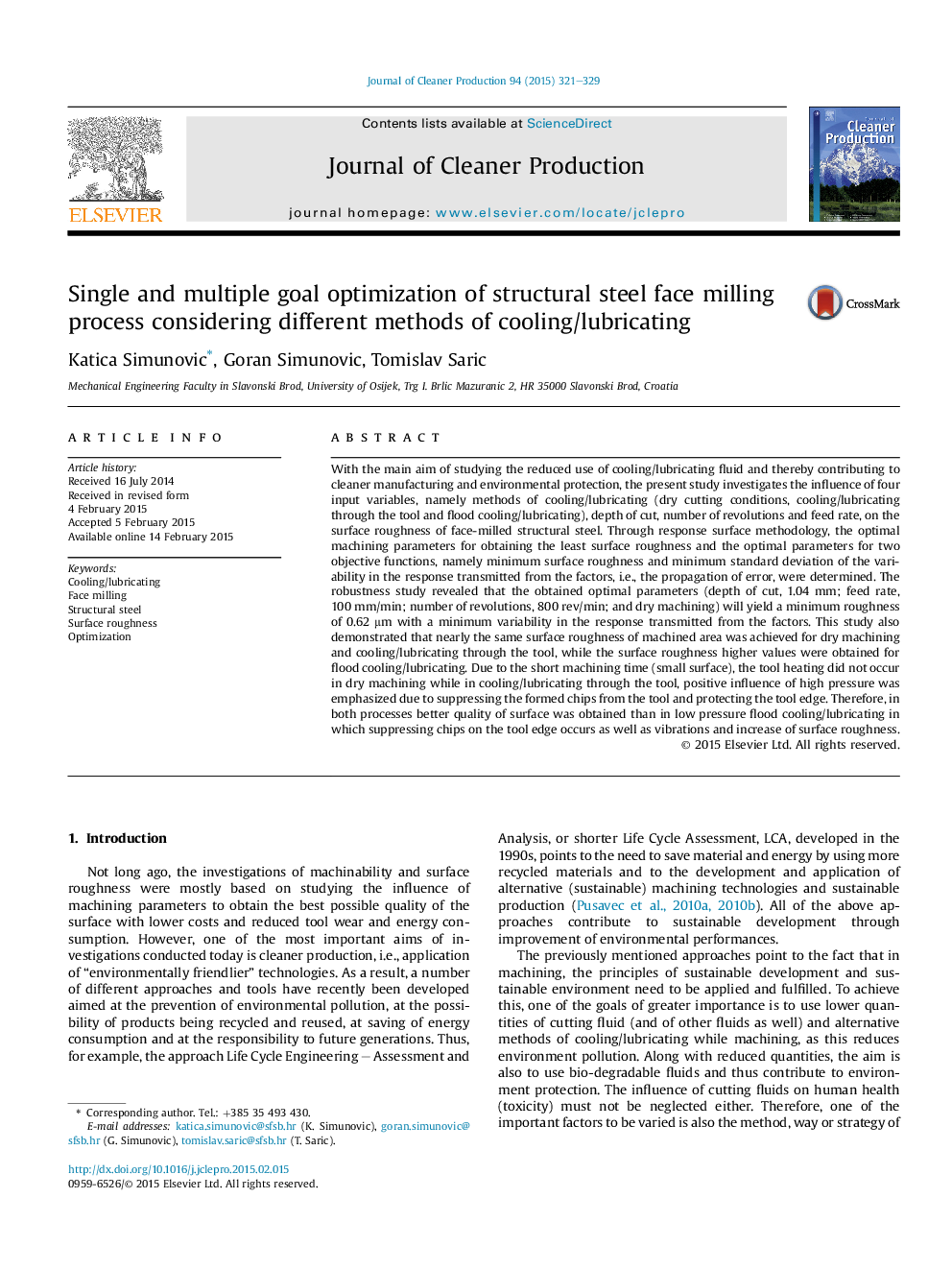| کد مقاله | کد نشریه | سال انتشار | مقاله انگلیسی | نسخه تمام متن |
|---|---|---|---|---|
| 8104689 | 1522152 | 2015 | 9 صفحه PDF | دانلود رایگان |
عنوان انگلیسی مقاله ISI
Single and multiple goal optimization of structural steel face milling process considering different methods of cooling/lubricating
ترجمه فارسی عنوان
بهینه سازی یکنواخت و چند هدف از فرآیند تراشیدن فولاد ساختاری با توجه به روش های مختلف خنک کننده / روانکاری
دانلود مقاله + سفارش ترجمه
دانلود مقاله ISI انگلیسی
رایگان برای ایرانیان
کلمات کلیدی
خنک کننده / روانکاری، فرز کاری، فولاد سازه، زبری سطح، بهینه سازی،
موضوعات مرتبط
مهندسی و علوم پایه
مهندسی انرژی
انرژی های تجدید پذیر، توسعه پایدار و محیط زیست
چکیده انگلیسی
With the main aim of studying the reduced use of cooling/lubricating fluid and thereby contributing to cleaner manufacturing and environmental protection, the present study investigates the influence of four input variables, namely methods of cooling/lubricating (dry cutting conditions, cooling/lubricating through the tool and flood cooling/lubricating), depth of cut, number of revolutions and feed rate, on the surface roughness of face-milled structural steel. Through response surface methodology, the optimal machining parameters for obtaining the least surface roughness and the optimal parameters for two objective functions, namely minimum surface roughness and minimum standard deviation of the variability in the response transmitted from the factors, i.e., the propagation of error, were determined. The robustness study revealed that the obtained optimal parameters (depth of cut, 1.04 mm; feed rate, 100 mm/min; number of revolutions, 800 rev/min; and dry machining) will yield a minimum roughness of 0.62 μm with a minimum variability in the response transmitted from the factors. This study also demonstrated that nearly the same surface roughness of machined area was achieved for dry machining and cooling/lubricating through the tool, while the surface roughness higher values were obtained for flood cooling/lubricating. Due to the short machining time (small surface), the tool heating did not occur in dry machining while in cooling/lubricating through the tool, positive influence of high pressure was emphasized due to suppressing the formed chips from the tool and protecting the tool edge. Therefore, in both processes better quality of surface was obtained than in low pressure flood cooling/lubricating in which suppressing chips on the tool edge occurs as well as vibrations and increase of surface roughness.
ناشر
Database: Elsevier - ScienceDirect (ساینس دایرکت)
Journal: Journal of Cleaner Production - Volume 94, 1 May 2015, Pages 321-329
Journal: Journal of Cleaner Production - Volume 94, 1 May 2015, Pages 321-329
نویسندگان
Katica Simunovic, Goran Simunovic, Tomislav Saric,
